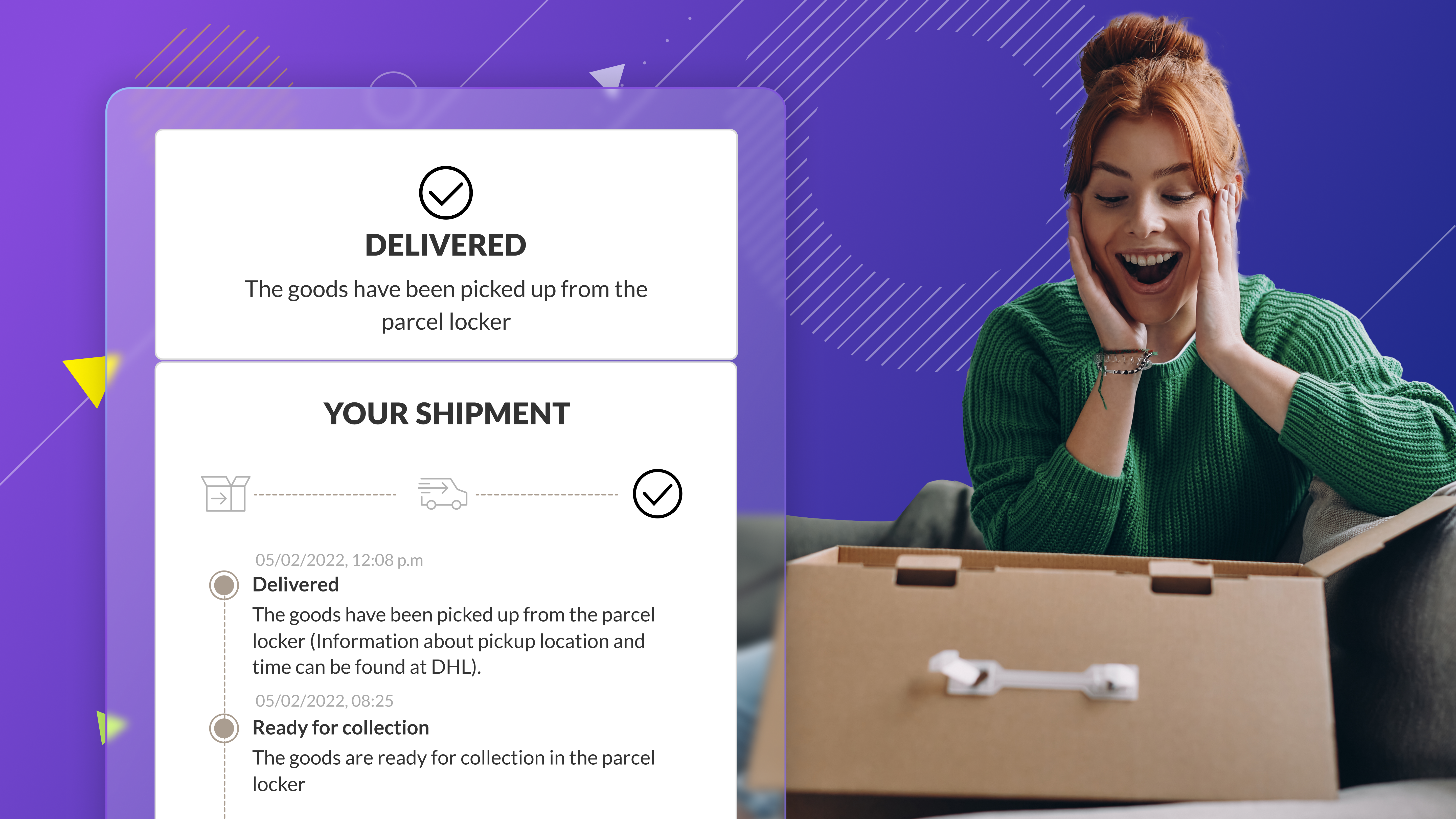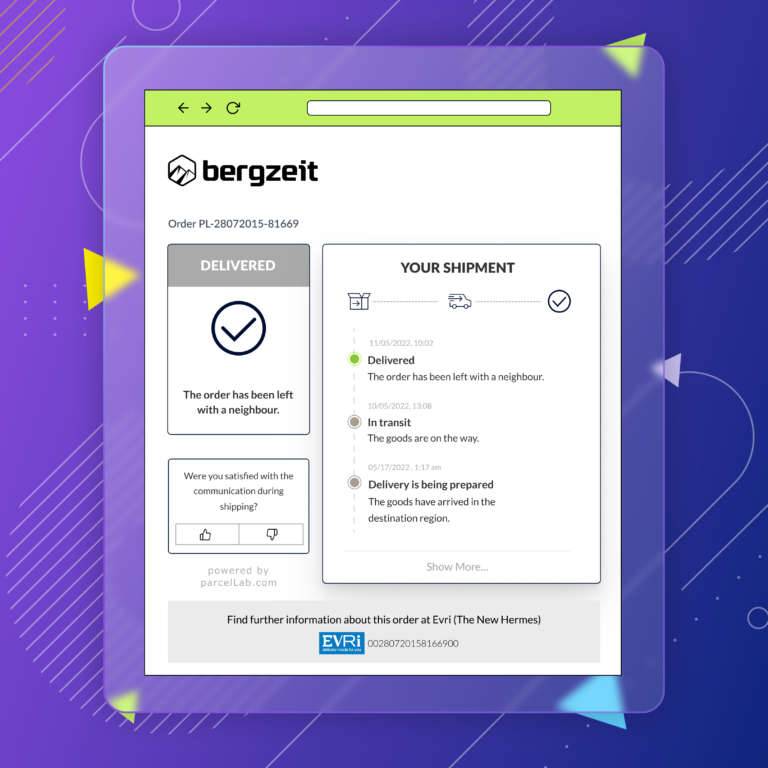Why parcelLab?
Discover why parcelLab is the go-to post-purchase partner for top retailers across the globe

We’ve all been there: you’ve finally decided on the pair of shoes or jeans you’ve been eyeing for weeks. You add it to your shopping cart, enter your card info, hit pay…and you’re done.
Or are you?
It’s not uncommon for ecommerce brands to pour most of their resources into acquiring or converting new customers for that initial purpose. After all, that’s the most important part of the marketing funnel, right?
Well, not really.
Our research shows that most consumers find the post-purchase experience to be the most emotional part of the shopping customer journey, which makes sense. There’s the anticipation of waiting for the package to arrive, the worry that something can go wrong or that the package might be delayed, and then the actual moment of unboxing their purchase.
Combined with the fact that you might need to return or exchange the package if it doesn’t meet your expectations, the post-purchase stage makes for an emotionally-charged time!
A lot is at stake if ecommerce brands underperform during the post-purchase experience. In fact, 69% of customers said they’d be far less likely to shop if an item wasn’t delivered within two days of its original arrival date, and 80% of customers said they’d switch brands after one poor customer service experience.
Conversely, if the post-purchase experience is smooth and hassle-free, your brand is more likely to improve customer satisfaction and create loyal customers. This, in turn, increases your overall revenue through high-value, repeat purchases.
But what exactly takes place after a customer purchases a product? And how can brands improve this critical segment of the customer journey? This article will show you everything you need to know about the post-purchase buyer journey.
Here’s a quick summary of the post-purchase journey.
| Post-purchase step | What it involves |
|---|---|
| Order fulfillment | Orders are picked, packed, and shipped. |
| Delivery | Orders are placed in the hands of the carrier, which takes care of delivering the package. Communication is vital at this stage. Keep your customers in the loop by informing them where their order is and its expected arrival time. |
| Customer support | The role of customer support in the post-purchase journey is to provide assistance and resolve any issues customers may have after making a purchase, helping to ensure a positive overall experience. |
Now that you have an overview of what happens during the after-sale part of the shopping journey, let’s dig into each of these phases in more detail.
The process usually begins before the customer has even placed an order, with the warehouse stocking up on their inventory. Once an order is placed, the information is passed on to the staff or a third-party fulfillment center, which will then move the item from storage and take it to the packing area. After that, the package will be sent out for delivery.
At this stage, there’s generally not too much happening for the consumer. The retailer will usually provide an immediate confirmation by email or text, informing them that the payment has been received, along with an order number the customer can use to contact customer support if needed.
Now, we’ve moved on to the critical stage of as the package is placed in the hands of the shipping carrier. Fulfillment providers often utilize a logic-based intelligent shipping system to determine the best carrier to send a package, which helps maximize efficiency.
During the final mile, customers should ideally receive more frequent updates — usually via email, push notification, or a which can be used for upselling or offering loyalty programs. This way, they’ll know exactly where their package is.
Here are some key moments for which to keep customers informed:
By offering proactive, transparent communication, the chances of customers needing to reach out to customer support is significantly reduced.
This brings us to our final point. Throughout the order fulfillment process, ecommerce brands should have a customer support team available to answer any questions or concerns. Customer support is a critical part of the consumer’s post-purchase journey, because if they have a poor experience, the customer lifetime value will significantly, if not completely, drop.
To help ensure that your brand’s team can provide stellar customer support, it’s important to reduce their workload and empower them to provide more personalized support to each customer.
While not every shopper will need to contact customer support, it’s helpful to know that they can reach someone if needed. If consumers struggle to contact a retailer or can only speak with a chatbot, chances are high that they’ll take their business elsewhere.
One of the best ways brands can increase customer lifetime value and improve the overall customer journey is by providing regular branded touchpoints through proactive follow-up communication.
Instead of waiting for customers to ask, “Where’s my package?” or “How can I initiate a return?”, brands can reduce the burden on their customer support team by sending regular updates on the order status.

For example, we helped our customer Bergzeit by providing informative and real-time updates, so customers could always quickly check the status of their package — whether it was dispatched, delayed, or anything in between.
We’ve also seen it lead to with our customer Weltbild — showing just how much it’s worth investing in post-purchase communication.
While it’s impossible to fully mitigate failed delivery, you can still reduce the chance of it happening. You should work with a partner that helps reduce the uncertainty around package delivery times by using data-driven forecasts and showing an estimated arrival time (aka delivery date promise) instead of shipping speed.
Finally, by creating a customized series of post-purchase white-labeled checkout emails to keep your customers in the loop, you’ll manage their expectations better. This is exactly what we did for Bose, which led to a whopping 78.5% open rate on all post-purchase comms.
If, despite your best efforts, your customer’s package is delayed, offer incentives like free shipping or a discount code on the next purchase while making sure your communication is empathetic and understanding.
If there’s one thing your brand should be doing, it’s constantly working to improve the ecommerce journey. As you start engaging with your customers — via repeat purchases, on social media, or other forms of earned media — you should listen and learn from their experiences to provide the best possible service.
Are you ready to commit but not sure where to start? Here are some pointers to get you on the right track.
There are different key performance indicators that you can use to benchmark your overall performance and optimize to improve retention.
Some of the most important KPIs you’d want to track on the post-purchase side of things include customer retention rate, repeat purchase rate, customer lifetime value, and of course, customer feedback.
Gathering customer feedback is a great way to learn more about why consumers engage with your brand, what their pain points are, what nearly stopped them from converting, and much more. While one of the easiest ways to do so is via a quick survey, other data collection methods like focus groups or brand tracking software exist.
Either way, all ecommerce brands should get real insights from their customers’ journeys: it’s the only way to truly and deeply provide value and ensure sustainable, long-term success.
In today’s world, there’s no denying that brands should be investing significant time and resources into the ecommerce post-purchase customer journey if they want to ensure they have loyal customers and a strong brand image.
At parcelLab, our allows us to be the only truly global enterprise post-purchase software provider. We’ve helped brands optimize their customers’ post-purchase experience with proactive communications, seamless carrier integrations, logistics reporting and returns, , and much more.
Discover how you can leverage the customer experience today with parcelLab by contacting us for a demo.